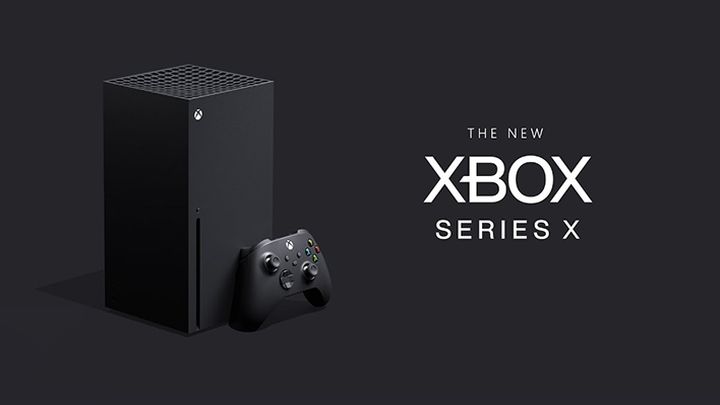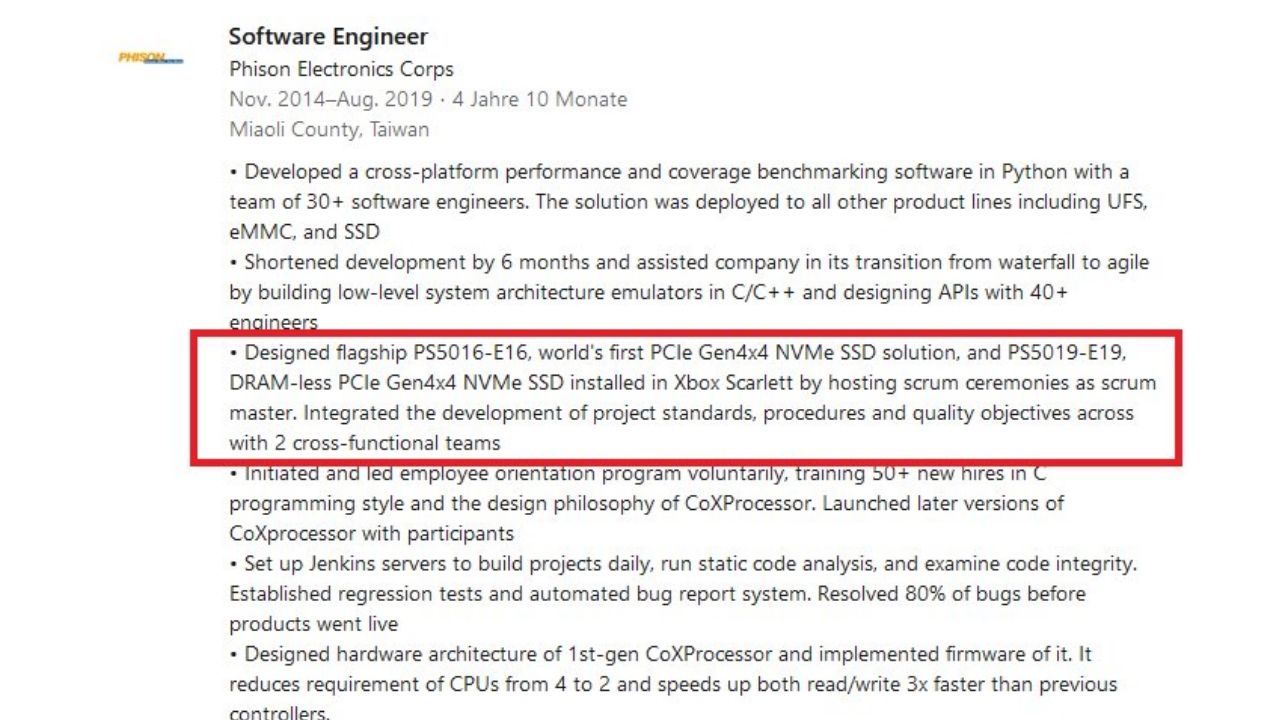We know the Bandwith of SSD Installed in Xbox Series X
Thanks to an entry published on LinkedIn, as well as specs posted on the web by the Phison company, we have probably learned about the parameters of the drive that will be used in the new Xbox.

The Taiwanese website Digitimes (via PurePC) has reached reports that suggest the speed of sequential reading and writing of data that the SSD (NVMe Gen 4) installed in the new Xbox will boast of. It is most likely to be 3700 and 3000 Mbps respectively (although 3600 and 2200 Mbps are also involved - more on this discrepancy later).

Where did the quoted values come from? The name of the controller (PS5019-E19), which is likely to go to the next Microsoft console, was published in the description of duties on LinkedIn by one of the former engineers at Phison, a Japanese company(picture above). Just check the parameters on the official website of the producer or watch the recently published promotional video about the technology in question to find out what kind of drive we will be dealing with (there is still the letter T in the linked materials in the product code, but the video directly mentions the game consoles, so everything seems to indicate that this is indeed the product we are interested in).
And here the aforementioned discrepancy appears, because the video and the producer's website provide different information (the material posted on YouTube presents better parameters). This is probably due to the fact that work on optimization is underway and the data on the website has not yet been updated (the video appeared online on January 20). It is worth noting that the maximum capacity of a disk using this controller is 2 TB - which of course is not a confirmation that such a medium will appear in the console.
How does the Phison PS5019-E19 compare to solutions known from PCs? Its bandwidth is slightly higher than most of the drives we can currently buy - e.g. the top Samsung 970 Pro, which often opens various lists of the best SSDs on the market, can boast of reading and writing at 3500 and 2700 Mbps. It is worth mentioning, however, that we are talking about the console, whose copies will stand next to our TVs only at the end of the year - during this time a lot can still happen (PurePC editors point out that Phison itself, next to PS5019-E19, is working on the PS5016-E16 controller, which is even faster - thanks to a DRAM module).
Phison has worked with AMD in the past, so you can rest assured that its products are compatible with Xbox Series X components. Perhaps if the same technology will be used in the next Sony console? Or will the Japanese giant bet on a completely different solution?
- „Let him sit in the middle of this stupid office.” Microsoft CEO wants everyone to work in open space, not remotely
- George R.R. Martin asked ChatGPT to write a sequel to Game of Thrones, then took the result to court
- Activision had Minecraft within its grasp. One mistake in judgment cost them billions
0
Latest News
- End of remote work and 60 hours a week. Demo of Naughty Dog's new game was born amid a crunch atmosphere
- She's the new Lara Croft, but she still lives in fear. Trauma after Perfect Dark changed the actress' approach to the industry
- „A lot has become lost in translation.” Swen Vincke suggests that the scandal surrounding Divinity is a big misunderstanding
- Stuck in development limbo for years, ARK 2 is now planned for 2028
- Few people know about it, but it's an RPG mixing Dark Souls and NieR that has received excellent reviews on Steam, and its first DLC will be released soon

